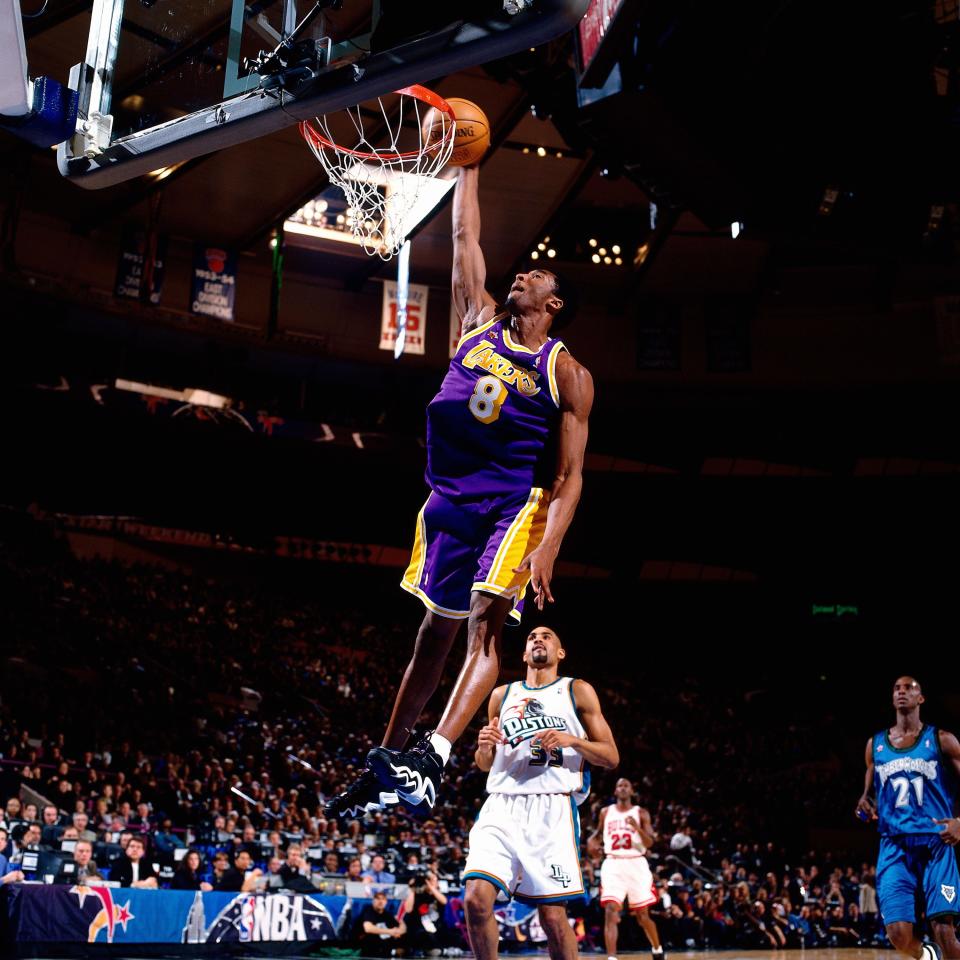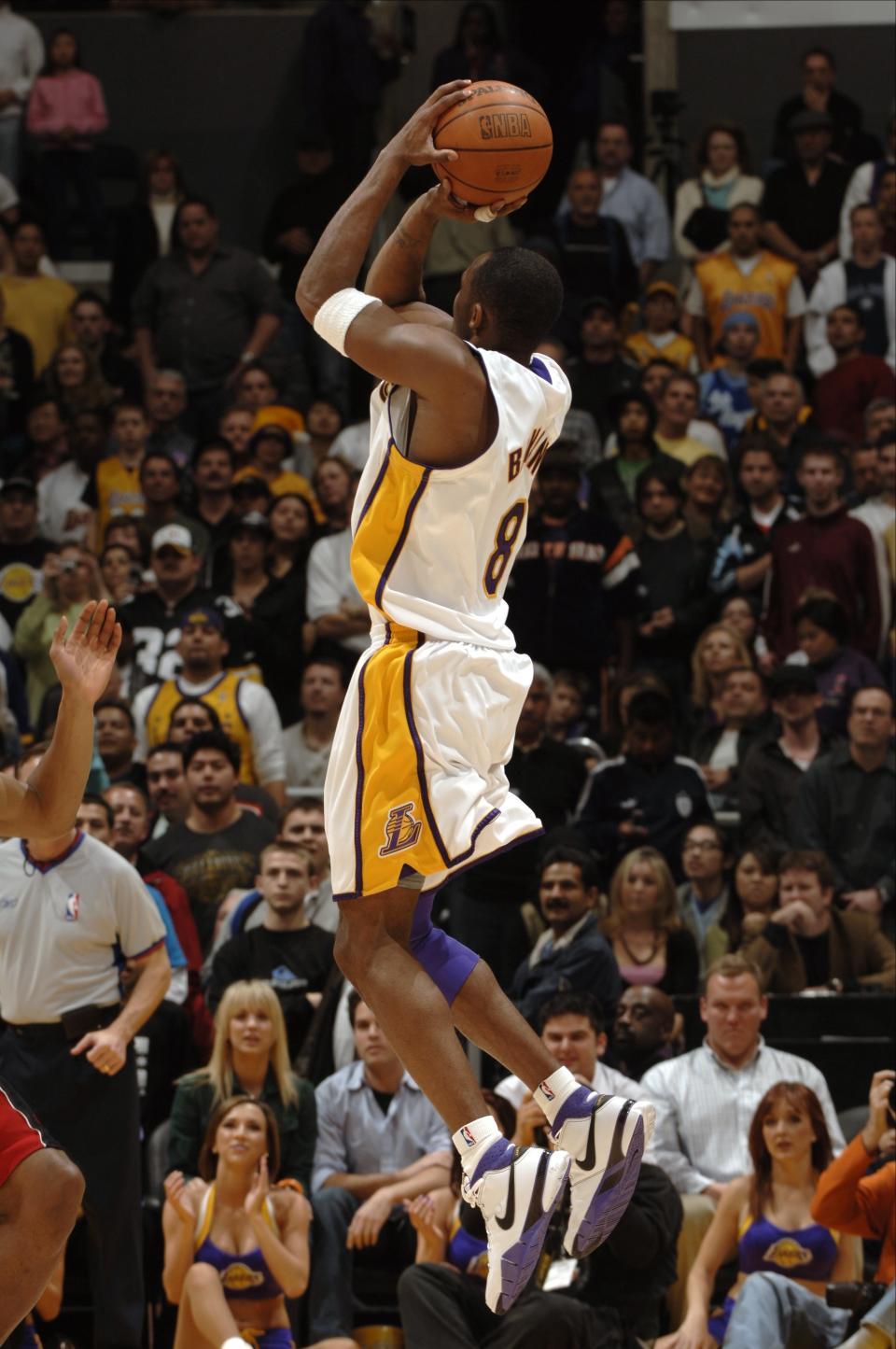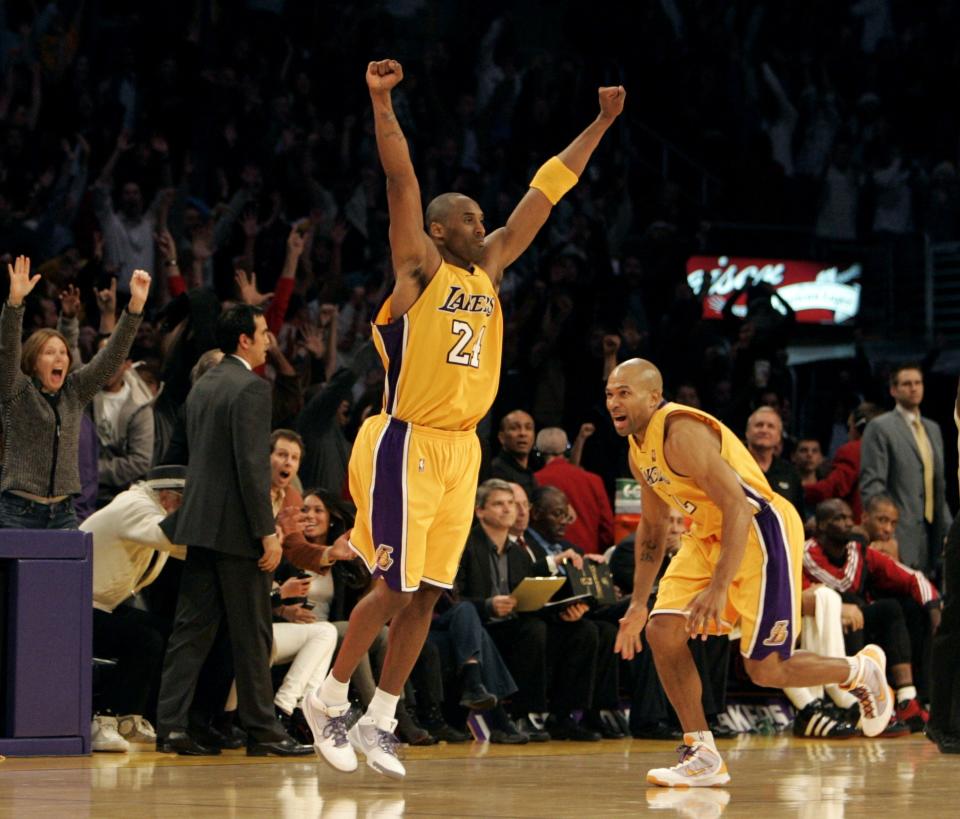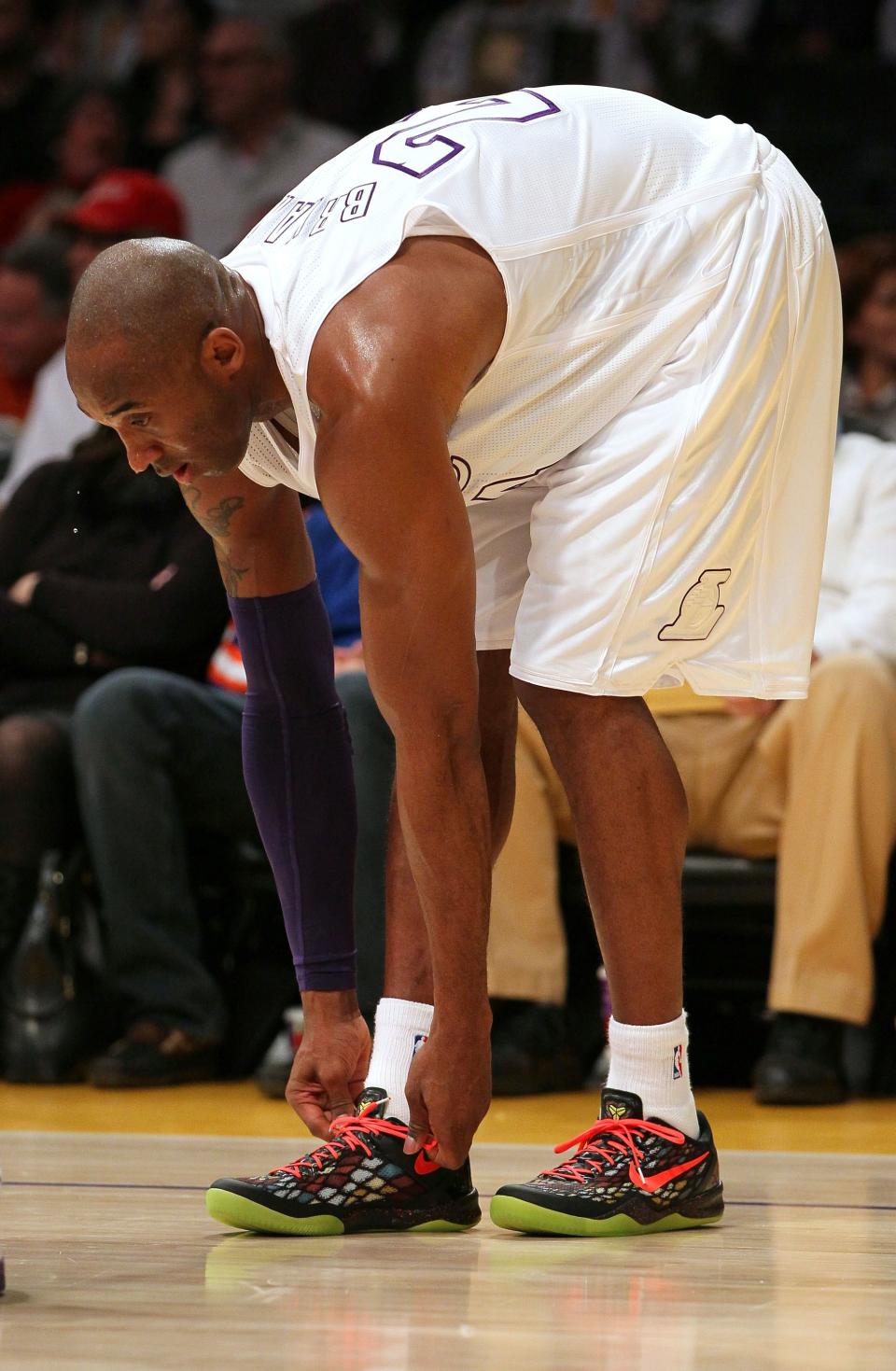How Kobe Bryant Changed Sneakers
“I don’t know if we have any proof that Kobe’s endorsement sells shoes,” Rick Burton, an executive director of Warsaw Sports Marketing Center at the University of Oregon told the Los Angeles Times in 2003. “No disrespect to Kobe—he’s a great guy—but historically, if you look at what happened at Adidas, there’s not proof [of his ability to sell shoes].” Burton’s is an NBA misjudgment up there with labeling O. J. Mayo the “next LeBron,” but at the time, it wasn’t a given that the Lakers star, who died tragically last weekend, would be a true sneaker icon.
Recall that, before the emergence of the Black Mamba, the Kobe System, and the most-worn line of signature shoes in the NBA, Kobe Bryant was signed to Adidas. And for a long time, it wasn’t clear he was as successful a sneaker marketer as he was a basketball player. In 2001, Adidas met with Kobe to present him with the next shoe that would bear his name: the Kobe 2, which looked less like a sneaker than a minivan for your feet. (Feet You...Reluctantly Drive?) The shoes are infamous, an icon for their lack of convention. They’ve been called “the worst signature sneakers in history.” There were even rumors that Kobe was repelled by them, and the same season they were unveiled, he switched back to the Adidas Kobe 1s. Maybe not coincidentally, Kobe bought himself out of his Adidas contract that summer. If you didn’t rise to his level, you were out.

Kobe Bryant Action Portrait
Kobe wasn’t able to sign a new deal for a whole calendar year due to a stipulation in his opt-out. And despite having solidified his standing in the basketball pantheon—he had just completed a back-to-back-to-back championship run—experts still doubted his ability to move sneakers. In the same off-season that Kobe signed a four-year deal in the range of $40 to $45 million, a fresh-out-of-high-school player from Akron, Ohio, named LeBron James sealed a deal with Nike for seven years, $90 million. As so often happened with Kobe, the doubters were silenced: Kobe and Nike would go on to have one of the most fruitful sneaker relationships in NBA history, perhaps second only to the Swoosh’s partnership with Michael Jordan. Pushing Nike to make a forgotten silhouette pro-ready would permanently change the complexion of basketball sneakers.
Central to Kobe’s sneaker success was the style Kobe and Nike designer (and now creative director) Eric Avar reintroduced to pro hoops: namely, the low-top basketball sneaker. (Avar did not immediately respond to a request for comment.)
Kobe, a lifelong soccer fan, insisted on low-top sneakers inspired by that sport’s cleats. In 2009, the Swoosh released the Nike Zoom Kobe IV. Ten years and 12 models later, another Kobe low-top, the Kobe A.D. Exodus, is the signature sneaker most worn by NBA players, according to data collected by Baller Shoes Database. (The second most popular model among players? The Kobe A.D. Mid.) (Also noteworthy: Kobe, ever ruthless in his pursuit of whatever might give him an edge, ditched his game-changing low-tops momentarily in favor of the high-high-high-top Kobe 9s.)

Raptors v Lakers X Bryant
That Kobe’s shoes are so beloved among current players doesn’t feel like a coincidence. Instead, it seems like hard evidence of the Laker’s lasting impact on the sport of basketball. Many of the players currently in the league grew up imitating Kobe’s game—counting down imaginary buzzers to beat, working on their crossovers, and 180-ing into fadeaway jumpers. “Everything. Everything. Everything I learned came from Kobe. Everything,” San Antonio Spur DeMar DeRozan emphasized post-game Sunday evening. “Take Kobe away and I wouldn’t be here.” It only makes sense that they’d wear his shoes, too.

That’s not to say Bryant's shoes aren’t cool. They are: He collaborated with the likes of L.A. streetwear shop Undefeated and luxury carmaker Aston Martin, while the image of George Lopez and other courtsiders on Christmas 2010, laced in the limited-edition acid-green “Grinch” Zoom Kobe VI, lingers. Naturally, limited-edition Kobes like those have been sucked into the resale market that dominates so much of sneaker culture in 2020.

The demand for Kobe’s sneakers hit such a fever pitch following his death Sunday morning, in fact, that Nike reports completely selling out of shoes and merch related to him. Certain secondary shops, like Urban Necessities, barred consignors from upping the price on existing listings to prevent people from profiting off of the current moment. “Following the tragic news of Kobe Bryant’s passing, there was a surge in interest in products related to the basketball legend, including some of his most noted sneaker collaborations,” StockX said via a statement. StockX isn’t pulling those items but will donate its proceeds from Kobe-related sales to the Kobe and Vanessa Bryant Family Foundation. Resale site Grailed reports that listings for Kobe's shoes and apparel have multiplied 7 and 12 times compared to the average. Also, prices are up 2.5 times for both.

A discussion of Kobe’s sneaker legacy isn’t complete without mention of the commercials that accompanied his shoes. ESPN reporter Ramona Shelburne, speaking on Zach Lowe’s “Lowe Post” podcast Monday, relayed that Kobe once proudly told her he wrote 90 percent of those commercials. Who else could have proffered the wisdom of being a different animal and the same beast, or of chasing success at success at success?

Despite Nike’s massive advertising muscle, it seems that no one was better at telling the story of Kobe than Kobe himself. If there is a throughline in Kobe’s career, it’s the confidence and self-assurance to do whatever he felt was right, whether that was hoisting contested fadeaways, constructing the Musecage, or spending most of a season in a pair of what Bleacher Report called the “ugliest sneakers in sports history.” And maybe Kobe was right all along: Are we sure that our current era, the one dominated by the purposefully ugly, big-and-chunky sneaker, wasn’t presaged in some small part by those Adidas Kobe 2s? Are we sure they aren’t great? Are we sure I don’t need a pair right this instant? Like every one of Kobe’s fadeaways, even the shots that seem ill-advised at first have an unusual tendency of winding up in the net.
Update 1/29 A previous version of this story said that the high-top Kobe 9s were developed with Kobe's Achilles injury in mind but the shoes were in development prior to the injury. Kobe 9 designs did eventually feature red suture-like lines running across the back of the shoe to "represent Bryant’s commitment to recover from a torn Achilles," a Nike press release from 2014 reads.
Originally Appeared on GQ

